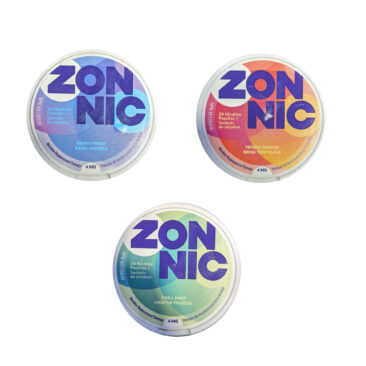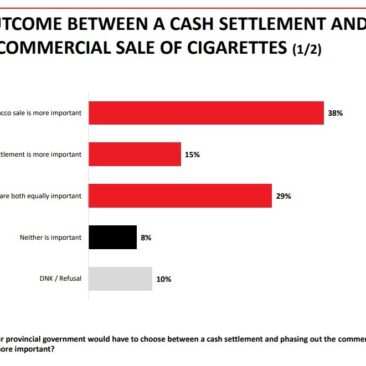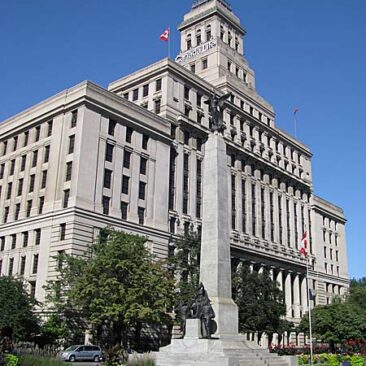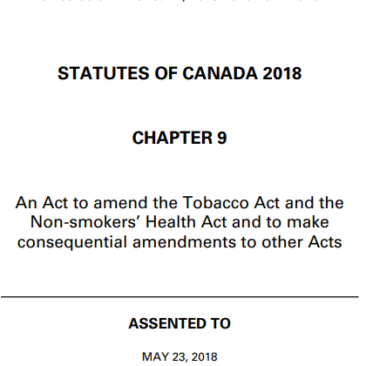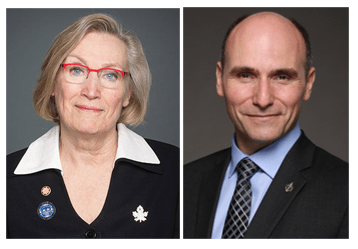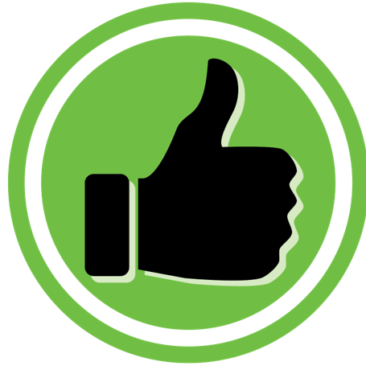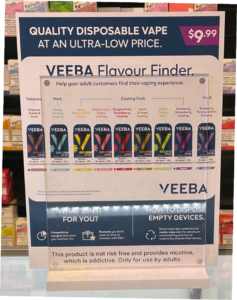 This week Canadian consumers and health regulators are facing a significant development in the vaping market, as the world’s largest tobacco company introduces VEEBA – an affordable and fancy disposable vape.
This week Canadian consumers and health regulators are facing a significant development in the vaping market, as the world’s largest tobacco company introduces VEEBA – an affordable and fancy disposable vape.
Philip Morris is the last of the big tobacco companies to launching vaping products. It’s decision to put its deep pockets and extensive marketing savvy behind cheap and cheerful disposable products may be a marker of a further shifts in the FMCG nicotine market.
Introducing VEEBA
PMI’s VEEBA is a one-time use electronic nicotine device manufactured by Kaival Industries (Bidi Vapor) and distributed by Philip Morris International (PMI) and through its Canadian subsidiary Rothmans, Benson and Hedges. It is a version of Bidi Stick, which, as a result of a court ruling, is still being sold in the United States despite being denied marketing authorization by the US Food and Drug Administration in 2021.
- Gold: fruit, citrus, cooling
- Indiblue: berry, exotic, creamy
- Blue Mint: minty, creamy, cooling
- Yellow-Green: fruit, sour, cooling
- Yellow: exotic, fruit, minty
- Red: exotic, fruit, cooling
- Coral Pink: exotic, fruit, cooling
- Mauve: berry, creamy, cooling

A very affordable option
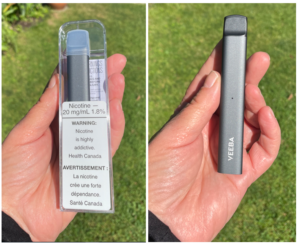 PMI’s new product is now the lowest-priced disposable vape on the Canadian market.
PMI’s new product is now the lowest-priced disposable vape on the Canadian market.
The suggested retail price for VEEBA is $9.99, although some retailers are currently listing it for $7.99. (When the new federal tax is applied this coming October, the price will be increased by $1, which is the new set tax for 2 ml or less of e-liquid).
By comparison, pods for PMI’s new VEEV device cost $12.99 for a package of two, with BAT’s VUSE Pods selling for $13.99 for a two-pack. A package of four JUUL pods costs $20.99. Throughout most of Canada, a package of the cheapest cigarette brand costs more than $10.
For experimenters, including teenagers, VEEBA is now the most affordable nicotine option for trial use.
Disposables: the increasing choice of young vapers
The rise of JUUL devices and the impact on youth vaping are not yet distant memories, and are a reminder of how powerful product design can be in influencing consumer trial. Globally, tobacco companies have now largely abandoned cig-a-like and tank-system vaping products as they shifted to JUUL-style devices — think BAT’s ePOD, Japan Tobacco’s Logic Compact and PMI’s VEEV.
It may be that JUUL is yesterday’s fad. Recently, disposable vaping products have emerged as the product with increased use by young people. In some cases, the increase is very dramatic: data from the U.K. released this week showed that one-half of young e-cigarette users had chosen a disposable device — up from less than one-tenth only last year.
PMI is the first tobacco tobacco company to jump on this trend, but is unlikely to be the last.
Why Canada is first.
At this point, it appears that Canada is the only country in which VEEBA is currently being marketed. PMI may well be using Canada as the test market for this new product.
Canada has been identified as one of the largest vaping markets, but there are other reasons why PMI is able to market VEEBA here before it can reach other markets. Canada does not have the regulatory and administrative barriers to market entry that exist elsewhere:
- Unlike the United States, in Canada there are no requirements for manufacturers to receive authorization from health authorities before marketing e-cigarettes.
- Unlike other countries, such member states of the European Union, there are no requirements in Canada for manufacturers give government a “heads up” before marketing products. Pre-notification is required in 42 countries, including member states of the EU countries, where 6 months notice is required prior to marketing, as is also the case in the United Kingdom. In New Zealand they must provide notification before marketing)
- Canada currently has no reporting requirements on vaping companies, although some were recently proposed. The European Union requires manufacturers to measure and report emissions and report on certain toxicologies related to their products.
The United States has begun enforcing its requirements that vaping products by authorized by the FDA. Last year, for example, it directed manufacturers of disposables to remove their products from the market, although the products remain on the market as this enforcement action develops.
Last year, Health Canada stated its intention to move forward with regulations to control youth-friendly product designs. Under consideration were “Regulations Amending the Vaping Products Promotion Regulations (Package and Design Features)” which would be designed with the purpose “to protect young persons and non-users of tobacco products from inducements to use vaping products. The proposed regulations would … impose restrictions on design features that are appealing to youth to prevent their use in the manufacture of vaping products.” The department subsequently stepped back from that intention, however, and did not include it on the regulatory workplan circulated this spring.
No guarantee of success
The market launch of a new vaping device is no guarantee of success for PMI or any other tobacco company. In the four years since vaping products were legalized in Canada, three other multinational tobacco companies have tried to succeed in this market, and two of them have failed:
* Japan Tobacco introduced its Logic Compact in early 2019, but took it off the market less than 24 months later. It no longer sells vaping products in Canada.
* Imperial Brands sold myblu vaping devices in Canada from mid 2018 to mid 2020.
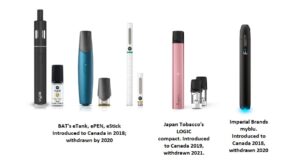 The third company, BAT, was not successful with its first product launches. In May 2018, its initial productws were the eTank (refillable) and eStick (cig-a-like). In September 2018, BAT introduced the ePEN, which looked like a JUUL product but did not work with high-nicotine liquids. In early 2019 the ePOD with its capacity to aerosolize higher concentration nicotine salts was launched. By the end of 2020, only the ePOD remained on the market.
The third company, BAT, was not successful with its first product launches. In May 2018, its initial productws were the eTank (refillable) and eStick (cig-a-like). In September 2018, BAT introduced the ePEN, which looked like a JUUL product but did not work with high-nicotine liquids. In early 2019 the ePOD with its capacity to aerosolize higher concentration nicotine salts was launched. By the end of 2020, only the ePOD remained on the market.

